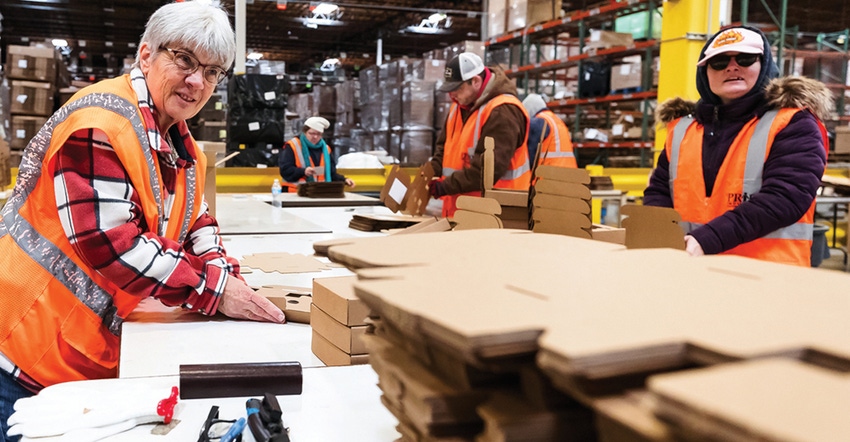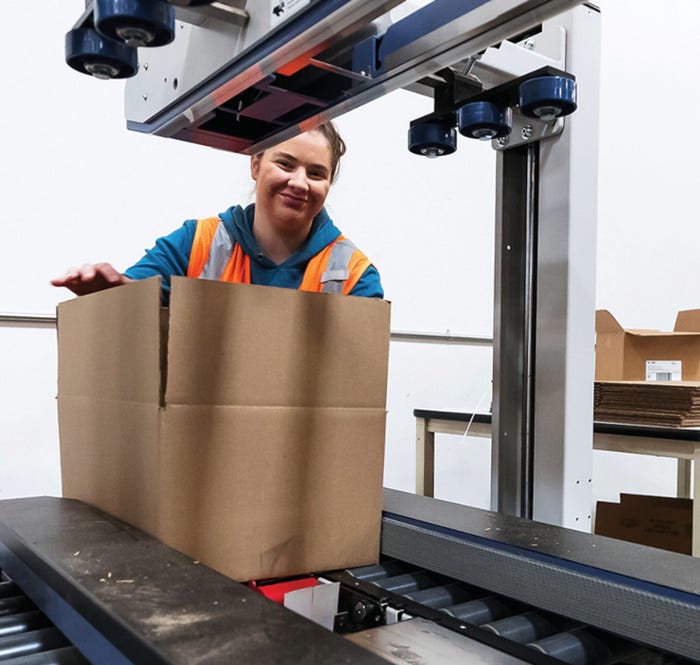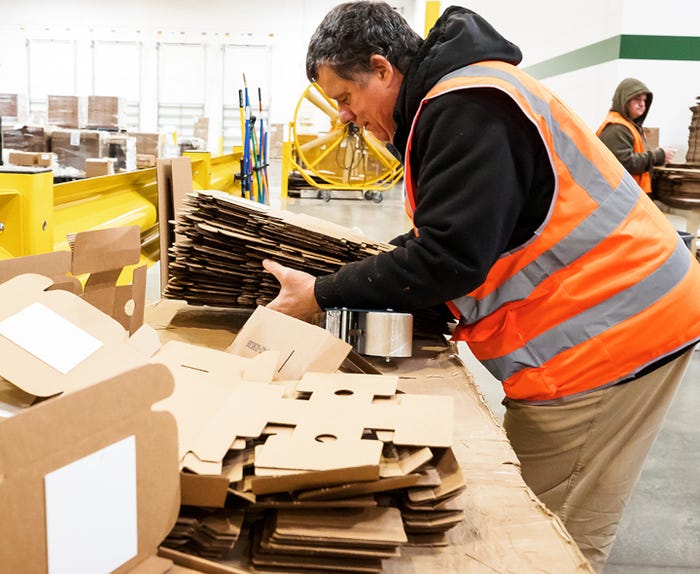Here’s a Source of Reliable Workers, and It’s Not a Packaging Robot
Manufacturers face labor turnover rates as high as 40% and struggle to find skilled, enthusiastic employees. But there’s an easy fix.

At golf manufacturer Acushnet, parent of Titleist and FootJoy brands, people with disabilities build packages for thousands of products every day. “They are the most can-do group I’ve ever been around, and they elevate the attitudes of everyone around them,” Director of Manufacturing Doug Jacot says. “They’re happy to be here, and if I could have a hundred of them, I would.”
With October being National Disability Employment Awareness Month, there’s never been a better time for packaging departments to consider hiring people with disabilities to expand their labor pools.
It’s no secret that high turnover rates continue to plague the sector, with about 40% of manufacturing employees calling it quits yearly, according to the Bureau of Labor Statistics — 44% in 2020, 39% in 2021, and 40% in 2022. What company can afford to lose nearly half its workforce each year?
A Deloitte/Manufacturing Institute study found that the manufacturing labor shortage could result in 2.1 million unfilled jobs, costing businesses a trillion dollars in 2030 alone.

The labor shortage has industry analysts like Gartner advising companies to look beyond the labor pools of past generations. “Organizations can no longer meet their talent needs through traditional sourcing methods and candidate pools,” says Emily Rose McRae, Future of Work and Talent Analytics researcher in Gartner’s HR Practice.
An untapped source of reliable labor.
People with disabilities represent one of the country’s largest and most reliable — if underutilized — labor sources.
In the United States, more than 10% of people aged 16-64, about 22 million people, have a disability. Historically, the workforce participation rate for working-age adults with disabilities has been around 30%, while the rate for persons without a disability in the same age group is about 75%.
But that’s changing, fast. In recent years, the employment-to-population ratio for people with disabilities has risen to record highs, reaching 37.9% in August, according to the monthly National Trends in Disability Employment (nTIDE) report, published by the Kessler Foundation and the University of New Hampshire.
But 62.1% of people with disabilities remain out of work. Fortunately, more and more companies — like Acushnet mentioned above — are finding skilled, reliable, and loyal talent in this community.
Acushnet’s Jacot is not alone in his positive experience employing people with disabilities.
Headquartered in Atlanta, Veritiv is a North American leader in packaging solutions, with a stellar reputation for designing and delivering outstanding kitting services for customers across the country. In 2004, when its West Sacramento, California, kitting team couldn’t find enough workers for a short-term project to kit 40,000 items, it turned to PRIDE Industries, a contract manufacturer with a mission to provide employment for people with disabilities and the company I work for, to build a contingent workforce for the project. The effort was so successful that Veritiv expanded the program to partner with multiple organizations, including Blind and Vision Rehabilitation Services, ASPIRO Inc., and Goodwill Industries.

How good are these teams? One Veritiv manager was working alongside employees with disabilities and realized that as he inserted himself into the assembly line, he slowed down the effort. “I learned to understand that everyone had self-worth and determination to get the job done,” Account Executive John Earley says. “By inserting myself I was just throwing a wrench in their process.”
Cost of accommodations is not a hinderance.
One of the reasons businesses often give for not including people with disabilities in the workforce is the added cost of “reasonable accommodations” that the Americans with Disabilities Act (ADA) says employers must make. But these costs are minimal. A survey of 3,528 employers by the Job Accommodation Network (JAN) found that 49.4% reported that the accommodations for employees with disabilities “cost absolutely nothing.” For employers that did incur an accommodation expense, the median, one-time expenditure was just $300.
Meanwhile, the Society for Human Resources Management pegs the average cost of replacing a single hourly worker at $1,500, significantly more than the cost of accommodation.
According to the Americans with Disabilities Act, the legal definition of a person with a disability is someone who has a physical or mental impairment that substantially limits one or more major life activities. Millions of people with disabilities can perform all kinds of work outside of those limitations with little or no accommodation. Forward-thinking companies like Acushnet and Veritiv prove this every day.
Darelyn Pazdel is Vice President of Workforce Inclusion at PRIDE Industries, the nation’s leading employer of people with disabilities.
About the Author(s)
You May Also Like




